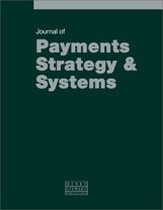Distributed ledger technology experiments in retail payments: Evidence from Turkey
Abstract
A growing number of central banks are exploring the potential introduction of a central bank digital currency (CBDC), and authorities are conducting distributed ledger technology (DLT) proof-of-concept experiments and pilot programmes. While these pilot projects have confirmed the feasibility of using DLT platforms for large-value wholesale payments, it is not yet clear whether these platforms will provide major advantages in terms of speed and scalability for small-value/large-volume retail payments. In Turkey, the existing instant payment system has already demonstrated that it can settle as many as 1,980 transactions per second (TPS) and 11.5 million transactions per day, across its 25 participant institutions. Moreover, simulations in test conditions suggest that it has the potential to deliver thousands of transactions per second, and that it is scalable to hundreds of participant institutions. Any retail payment system built on a DLT platform must therefore, at the very least, perform at a comparable level. Using actual retail payment data from the day on which the peak TPS was observed, this paper describes a novel experimental investigation into the TPS and scalability performance of two open source DLT platforms (Hyperledger Fabric and Quorum) and Turkey’s instant payment system for retail payments, with the aim of providing valuable insights for the design of alternatives for future CBDC launches. The study presents several empirical findings. First, it demonstrates that the speed and scalability of selected DLT platforms are not yet mature enough to establish an enterprise retail payment solution. Secondly, the experimental design enables us to determine precisely which DLT platform is facing a performance and capacity bottleneck and under what circumstances. One of the most critical findings is that platforms with a modular architecture and more efficient transaction life cycle perform relatively better, although still lack the requirements for achieving reliable and efficient retail payments. Lastly, we suggest that it could be worth developing an integrated approach in which the central instant payment system and DLT-based digital currency solution communicate via a bridge platform.
The full article is available to subscribers to the journal.
Author's Biography
Gökhan Çağlayan is Director of Information Technology Architecture in the Central Bank of the Republic of Turkey’s Information Technologies Department, where he is responsible for the management of enterprise information technology and research on new technologies. He has a BSc in computer engineering and an MSc in information systems from the Middle East Technical University.
Bilgehan Kürşad Öz is the Director of Strategic Technologies in the Central Bank of the Republic of Turkey’s Financial Innovation Department, where he is responsible for the central bank’s digital currency project. He has a BSc in computer engineering from Hacettepe University and an MSc in information systems from Middle East Technical University.
Aleaddin Özer is a senior system engineer in the Strategic Technologies Division of the Central Bank of the Republic of Turkey. He is responsible for the management of cloud virtualisation infrastructure and distributed systems. He has a BSc in computer engineering and is currently pursuing an MSc in computer engineering at Hacettepe University, where he is working on hardening next-generation payment systems with quantum cryptography algorithms.
Emrah Şener is Deputy Governor of the Central Bank of the Republic of Turkey, where he is responsible for the Payment Systems and Financial Technologies Department and the Financial Innovation Department. He also serves on the advisory board of the World Economic Forum’s Digital Payment Group. Dr şener has a bachelor’s degree in business administrationfrom Boğaziçi University, a master’s degree in economics and finance from the London School of Economics and a PhD in mathematical finance from Imperial College London.
